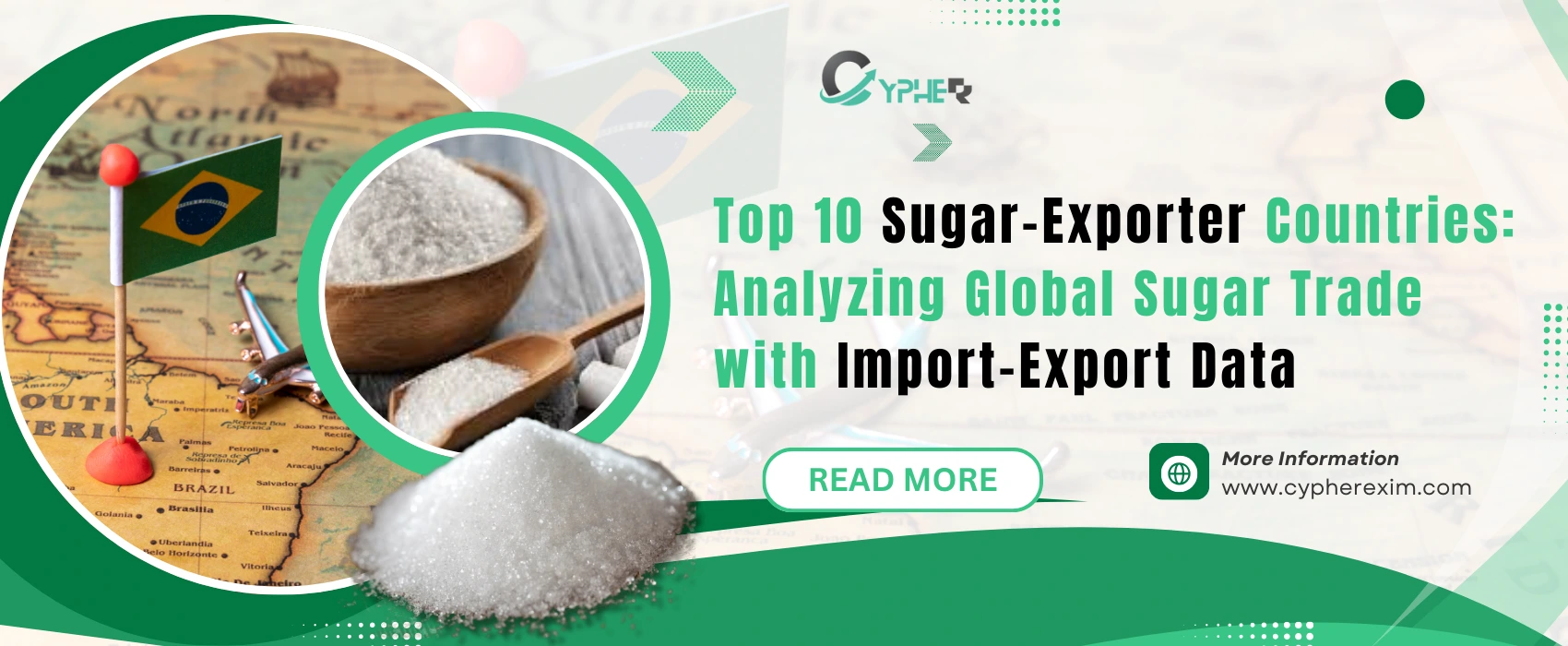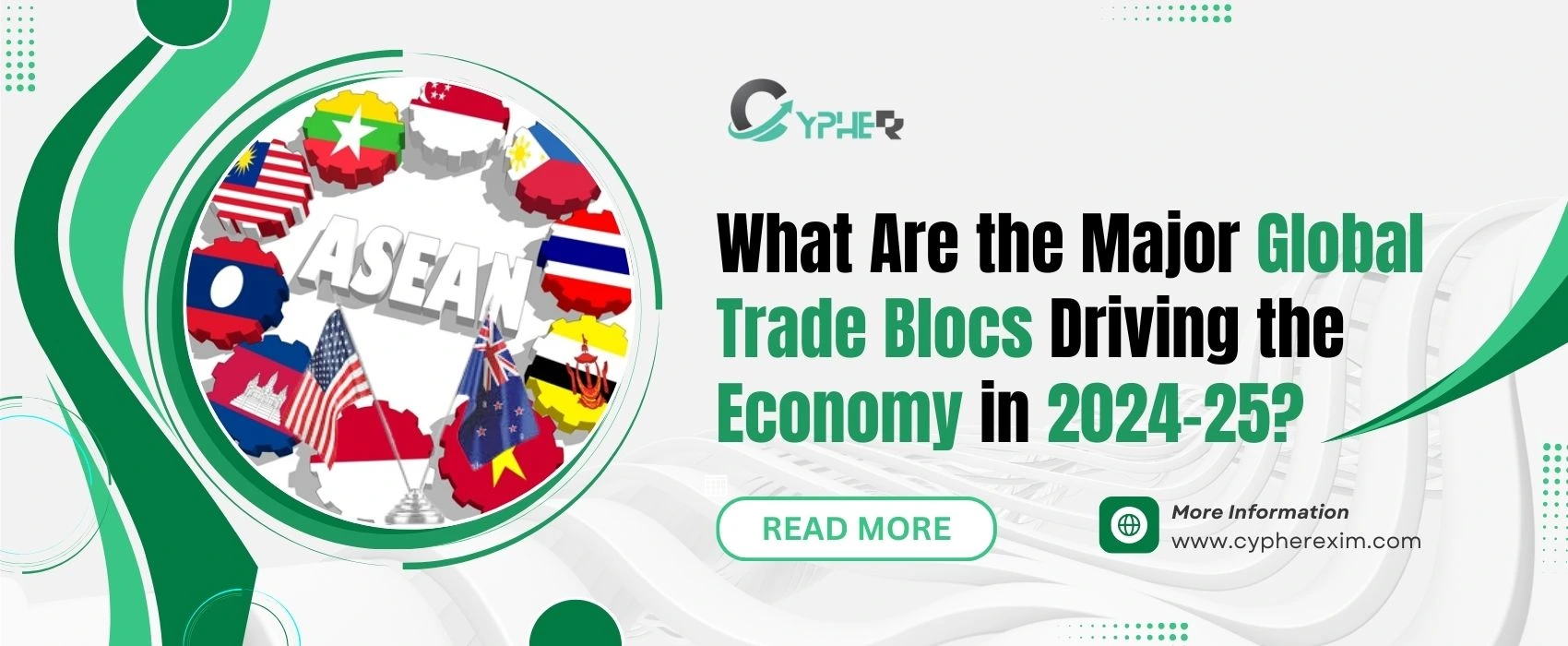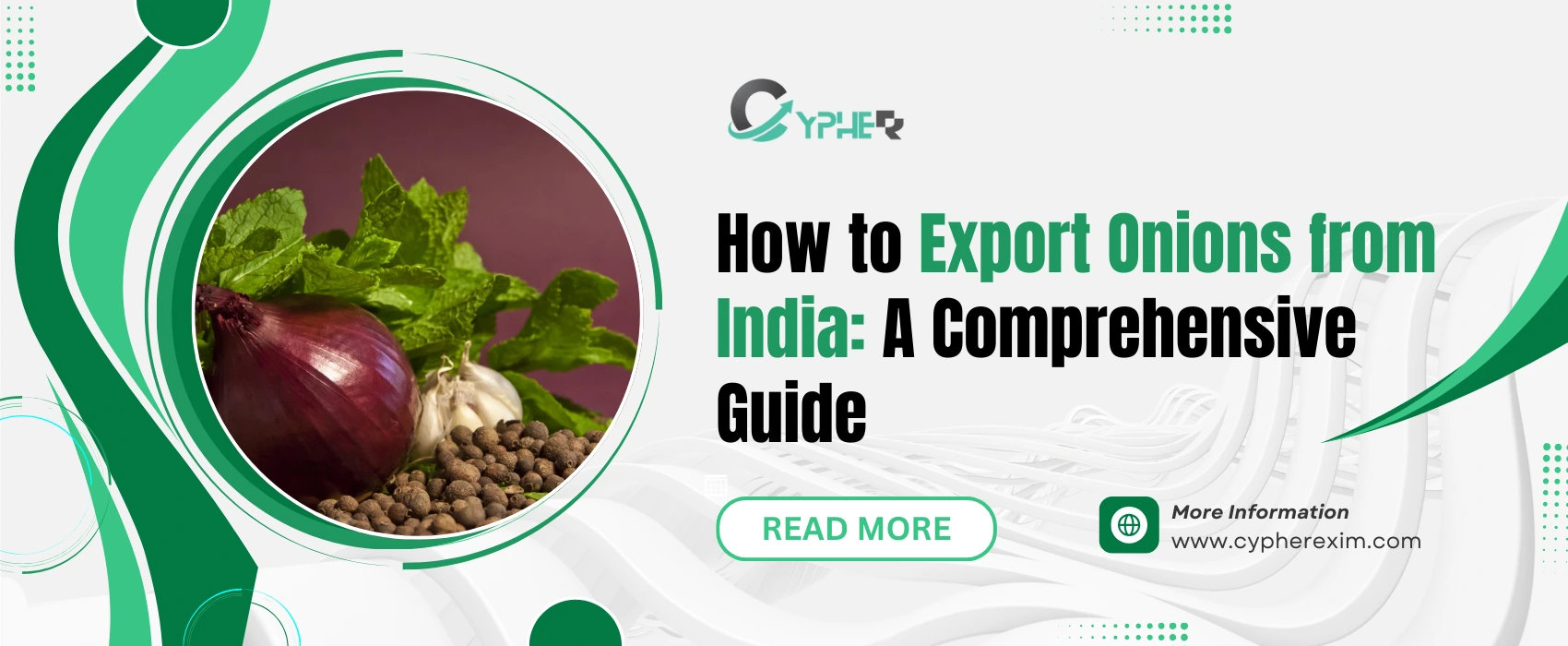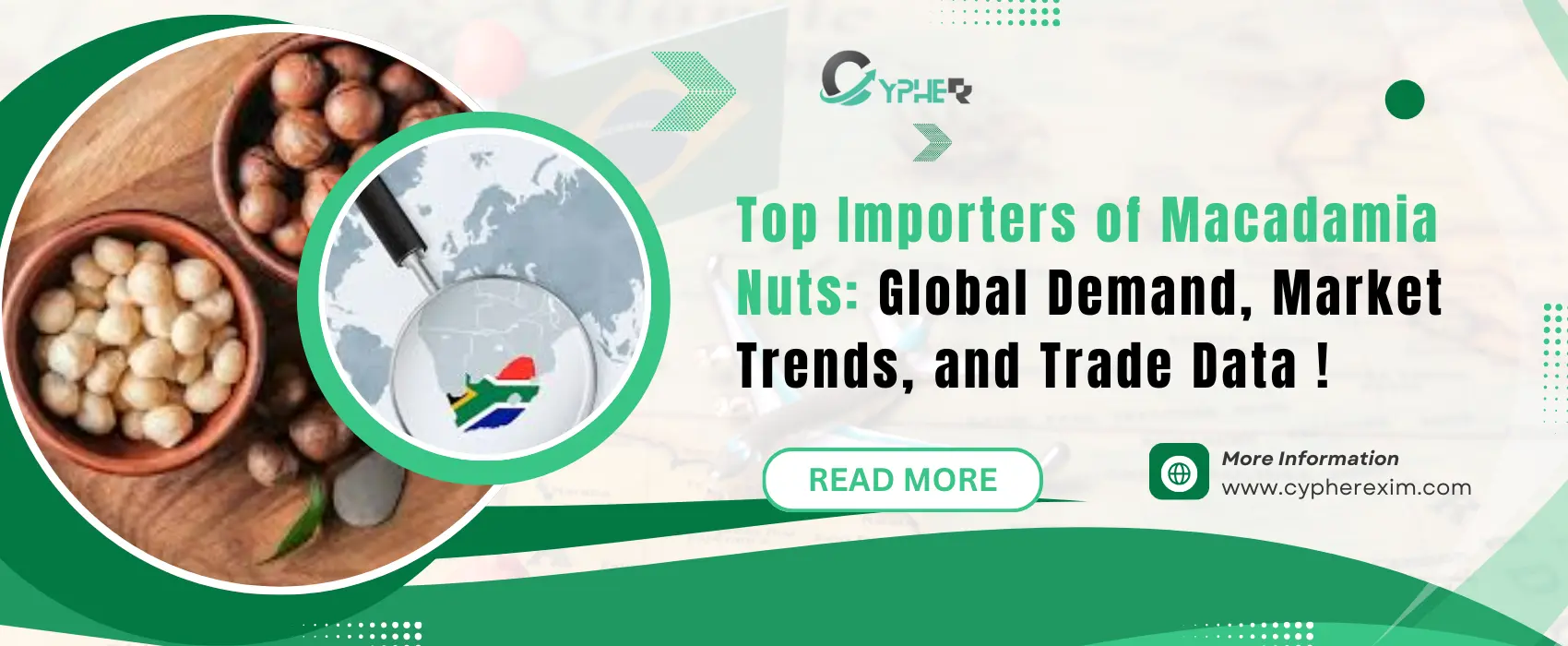How Global Trade Data Can Help You Find the Right Suppliers and Buyers
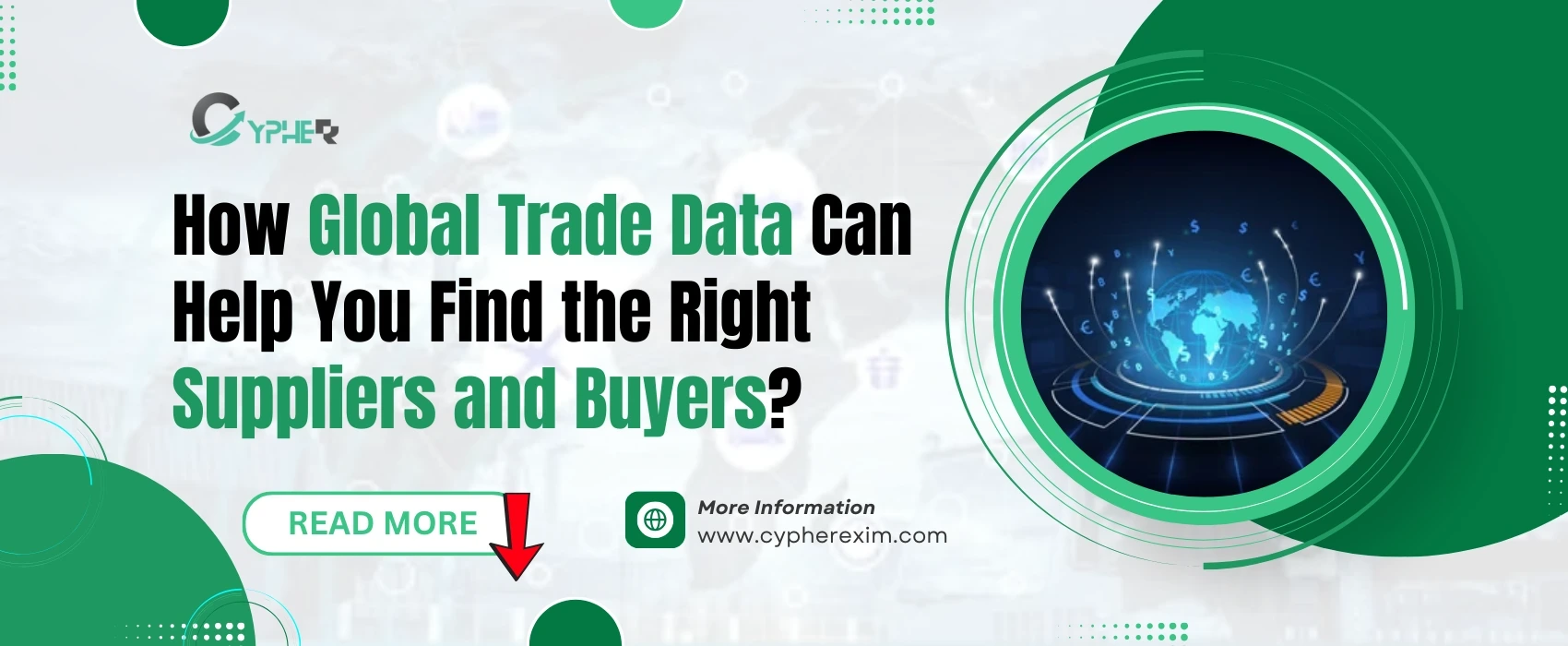
13 May 2025
Nowadays as the whole world got interconnected so easily, the global trade has become the backbone of many businesses whether we talk about startups or even multinational corporations. One might be looking to source raw materials at a cheap price with a better quality, while the other wanted to expand their customer base all around the world, or even streamline their supply chain. Exploring and reaching out to the right buyers and suppliers is one of the most crucial aspects of success. However, the question is how do you even identify and reach out to the best buyer suppliers in the world while there are millions of companies operating worldwide? The answer is so simple yet often overlooked, which is leveraging global trade data, a very powerful way by which you want have actionable insights into international markets. Nowadays, in the modern Era of internet, anyone can go on the internet and look for services like import export data providers, buyer supplier data provider, or even Exim Data and businesses can easily make informed decisions, unlock new opportunities, and reduce unforeseen risks that could cost companies millions. Although there would be no other service provider like Cypher who has Industry Experts of 20+ years of Experience, not only tell you how you can utilize this
This article explores how global trade data works, why it’s essential, and how it can help you find the right suppliers and buyers. We’ll break it down into simple, easy-to-understand terms, ensuring you can grasp the value of trade data and apply it to your business.
The following article explores how global trade data functions and why it becomes a crucial for any business, and how it can help you finding the right buyers suppliers precisely. Let’s break it down into simple and easy to understand terms ensuring how companies can grasp the value of trade data and apply it to your business.
What Is Global Trade Data?
Global trade data is a comprehensive record of international trade activities, including imports and exports between countries. It captures details such as:
- Who is purchasing or selling (company names, contact details).
- What is being traded (product descriptions, HS codes, quantities).
- Where the trade is happening (countries, ports, shipping routes).
- When the transactions occur (dates, frequency).
- How much is being traded (values, volumes, prices).
By analyzing global trade data, businesses gain a clear picture of market trends, competitor activities, and potential partners. Let’s dive into how this data can help you find the right suppliers and buyers. As you analyze global trade data, your business could get a clear picture of competition, market trends, product activities and potential business partners. In this blog, lets dive into this data that can help you find the right buyer or supplier for your business.
Why Global Trade Data Matters for Your Business
Global trade data isn’t just numbers and spreadsheets—it’s a treasure trove of insights that can transform how you operate. Here are some key reasons why it’s a game-changer: These are not just numbers or any spreadsheet, its like a treasure trove of insights that can transform how your company operates. Here are some key benefits that can make your business a complete game changer in the industry:
1. Identify Reliable Suppliers
Finding a trustworthy supplier is one of the biggest challenges in global trade. A reliable supplier delivers quality products on time, offers competitive prices, and aligns with your business needs. Global trade data helps you:
Finding and reaching out to a genuine and trustworthy supplier is one of the biggest challenges in global trade. An authentic supplier delivers quality products on time, offers competitive prices and tend to align with your business needs. How global trade data helps you:
- Verify Supplier Credibility: You may learn about a supplier's export volumes, shipment frequency, and target markets by looking through their trade history. A provider is probably trustworthy if they regularly export to respectable customers.
- Compare Suppliers: Using trade data, you can evaluate several suppliers according to factors like product quality, cost, and shipment dependability. If you're looking to get cotton fabric, for instance, you may check which providers ship in bulk to your nation and at what cost.
- Find New Vendors: Rather than depending on rumours or out-of-date directories, trade data shows you new sources in places you might not have thought about, including Latin America or Southeast Asia.
A list of Indian textile providers, their major customers, and the kinds of fabrics they sell, for example, can be obtained from an import-export data source. This enables you to narrow down your list of potential suppliers to those who meet your needs.
2. Find the Right Buyers
Building relationships with customers that require your goods is crucial for exporters looking to expand. Data about international trade assists you:
- Target Buyers Who Are Active: Businesses that are actively importing goods similar to yours are identified by trade data. For instance, if you produce solar panels, you may be able to locate customers that import comparable goods from North America or Europe.
- Recognise the preferences of the buyer: You may determine what products consumers prioritise, their preferred price points, and the suppliers they currently work with by looking at import data. This enables you to modify your products to suit their requirements.
- Enter New Markets: Markets for your items are expanding, according to trade data. Instead of concentrating only on conventional markets like the U.S., you can target Japanese consumers if you observe an increase in organic coffee imports into Japan.
Using Exim Data, you can generate a list of potential buyers, complete with contact details and import histories, making it easier to pitch your products.
3. Stay Ahead of Competitors
Finding partners is only one use for global trade data; another is comprehending your rivals. Examining trade records allows you to:
- Examine the suppliers your rivals use and the costs they incur.
- Determine who customers your rivals cater to and what goods they offer.
- Find market gaps where your competitors aren't operating, which will allow you to enter the market.
A buyer supplier data provider, for instance, can reveal to you that a rival is purchasing expensive raw materials from a single source. After then, you may bargain with other vendors to get lower costs, which would give you a competitive advantage.
4. Reduce Risks
Risks associated with international trading include unstable partners, shifting prices, and regulatory changes. Data on international trade reduces these risks by:
- Giving you information about a partner's trading history so you may steer clear of businesses with erratic performance.
- Highlighting market trends so you may make appropriate plans, such as changes in prices or supply chain interruptions.
- Locating partners who follow international standards in order to ensure adherence to trade legislation.
You may make well-informed decisions that reduce risks and maximise earnings by using data from a reliable import export data source.
How to Use Global Trade Data to Find Suppliers and Buyers
Let's look at some effective ways to use global trade data now that you know its importance. Here is a detailed guide:
Step 1: Identify What You Need
Clearly define your goals before delving into trading data:
- Regarding Vendors: What goods are you in need of? What are your delivery schedules, budget, and quality standards? What nations are you willing to source from?
- For Purchasers: Which goods are available? Which markets are you aiming for? Do you wish to target any particular customer profiles, such as wholesalers or retailers?
For instance, if you are a clothing retailer, you may want to sell your branded items to customers in Australia, or you may require cotton T-shirts from suppliers in Bangladesh.
Step 2: Choose a Reliable Data Provider
Not all trade data is created equal. Look for a reputable import export data provider or buyer supplier data provider that offers:
- Comprehensive Data: Coverage of multiple countries, products, and trade activities.
- User-Friendly Tools: Searchable databases, filters, and analytics to simplify your research.
- Up-to-Date Information: Real-time or frequently updated data to reflect current market conditions.
- Accurate Records: Verified data from credible sources like customs departments.
Popular platforms offering Cypher offers you incredible market insights whether you are from any Country or Industry, Our comprehensive insights and top notch analytical features can make a huge difference for your business. Cypher also offers customized reports tailored to your industry.
Step 3: Search for Suppliers or Buyers
Once you have access to a trade data platform of Cypher, now use its search tools to find partnwrs. Most platforms allow you to filter by:
- Product: Use HS codes (Harmonized System codes) or product descriptions to narrow down your search. For example, the HS code for coffee is 0901.
- Country: Focus on specific countries for sourcing or selling.
- Company: Search for specific companies or discover new ones based on their trade activity.
- Trade Value/Volume: Filter by the size of transactions to find partners that match your scale.
For instance, if you’re looking for coffee suppliers, you might search for companies exporting HS code 0901 from Brazil. The data will show you their shipment volumes, buyers, and ports of export.
Step 4: Analyze the Data
Don’t just collect names—analyze the data to make smart choices. Look for:
- Consistency: Does the supplier or buyer have a steady trade history?
- Scale: they handling volumes that align with your needs?
- Reputation: Are they working with well-known companies?
- Pricing: Are their prices competitive based on market trends?
For example, if a supplier exports 1,000 tons of coffee monthly to major brands, they’re likely a reliable partner. Conversely, a supplier with sporadic shipments might be riskier.
Step 5: Reach Out to Partners
Once you’ve shortlisted potential suppliers or buyers, contact them with a tailored pitch. Use the insights from trade data to personalize your approach. For example:
- To a supplier: “I noticed you export high-quality cotton fabric to Europe. We’re a U.S.-based retailer looking for similar products and would love to discuss a partnership.”
- To a buyer: “Your company imports organic coffee from Colombia. We offer premium organic beans from Ethiopia and believe we can meet your needs.”
Trade data often includes contact details, making it easier to initiate conversations.
Step 6: Monitor and Refine
Global trade is dynamic, so keep monitoring trade data to:
- Track your partners’ activities and ensure they remain reliable.
- Stay updated on market trends, such as new suppliers entering the market or shifts in buyer demand.
- Refine your strategy based on new opportunities or challenges.
By regularly using Exim Database, you can stay agile and competitive in a fast-changing market.
Real-World Examples of Global Trade Data in Action
To illustrate the power of global trade data, here are two hypothetical scenarios:
Scenario 1: Finding a Supplier
Sarah runs a furniture business in Canada and needs affordable, high-quality wooden tables. She uses an import export data provider to search for suppliers in Southeast Asia. The data reveals:
- A German importer buying large quantities of saffron from Iran and Spain.
- The importer’s import volumes have grown 30% in the past year, signaling strong demand.
- Contact details for the importer’s purchasing manager.
Ahmed reaches out with a competitive offer, highlighting the quality of his saffron. The importer places a trial order, leading to a long-term contract.
These examples show how trade data turns abstract opportunities into concrete partnerships.
Challenges and How to Overcome Them
While global trade data is incredibly valuable, it’s not without challenges. Here’s how to navigate common obstacles:
1. Data Overload
Trade databases can be overwhelming due to the sheer volume of information. To avoid getting lost:
- Use filters to focus on specific products, countries, or companies.
- Start with a small set of criteria and expand as needed.
- Work with a data provider that offers intuitive dashboards or customer support.
2. Accuracy Concerns
Not all data is 100% accurate due to errors in customs records or incomplete information. To ensure reliability:
- Cross-check data from multiple sources if possible.
- Choose a reputable buyer supplier data provider with a track record of accuracy.
- Verify partners through direct communication or third-party audits.
3. Cost of Access
High-quality trade data often comes with a subscription fee, which can be a barrier for small businesses. To manage costs:
- Start with a trial or basic plan to test the platform’s value.
- Focus on providers offering flexible pricing based on your needs.
- Consider the return on investment—spending $500 on data could save thousands by finding better partners.
4. Language and Cultural Barriers
When dealing with international partners, language or cultural differences can complicate communication. To bridge the gap:
- Use trade data to identify partners in countries where you’re comfortable doing business.
- Hire translators or local agents if needed.
- Research cultural norms to build stronger relationships.
The Future of Global Trade Data
As technology advances, global trade data is becoming even more powerful. Here are some trends to watch:
- Artificial Intelligence (AI): AI-powered tools are making it easier to analyze trade data, predict market trends, and recommend partners.
- Real-Time Data: Providers are offering near-instant updates, allowing businesses to react quickly to market changes.
- Blockchain Integration: Blockchain technology is improving data transparency, ensuring records are tamper-proof and trustworthy.
- Sustainability Insights: Trade data is increasingly including information on suppliers’ environmental practices, helping businesses choose eco-friendly partners.
By staying ahead of these trends, you can maximize the value of trade data and future-proof your busi
Global trade data is a vital tool for businesses looking to thrive in the international marketplace. Whether you’re sourcing materials, selling products, or expanding your network, services like import export data providers, buyer supplier data providers, and Exim Data offer the insights you need to find the right suppliers and buyers. By providing transparency, reducing risks, and uncovering opportunities, trade data empowers you to make smarter decisions and stay competitive.
To get started, define your goals, choose a reliable data provider, and dive into the wealth of information at your fingertips. With global trade data as your guide, you’ll be well-equipped to build strong partnerships, grow your business, and navigate the complexities of international trade with confidence.
1. Technical Integration and Customization
- How does the integration of Truecaller’s Verified Business Caller ID Solution with Tata Telecom’s virtual number platform ensure seamless identification of our sales team’s calls across diverse devices and operating systems (e.g., Android, iOS, VoLTE)? Rationale: Ensures compatibility and consistent user experience across Truecaller’s 450 million+ user base, especially in India where iOS limitations exist.
- Can you provide details on the API or SDK integration process for embedding Truecaller’s Verified Business Caller ID into our CRM or outbound calling systems? What level of customization is available for call metadata (e.g., displaying specific brand logos or call purposes)? Rationale: Verifies if TTBS supports advanced CRM integrations and allows tailored branding to enhance customer trust.
- What mechanisms are in place to dynamically update our virtual numbers’ status on Truecaller’s database to prevent false positives in spam detection, especially during high call volume campaigns? Rationale: High call volumes can trigger spam flags; understanding real-time database synchronization is critical.
2. Spam Prevention and Truecaller’s Algorithm
- How does TTBS leverage Truecaller’s AI-driven spam detection algorithms to differentiate our sales team’s legitimate outbound calls from typical spam patterns, such as high-frequency or short-duration calls? Rationale: Truecaller uses complex data analysis (caller details, call frequency, time of day) to flag spam; you need assurance your calls are distinguished.
- What specific parameters or behavioral analytics does TTBS configure with Truecaller to ensure our virtual numbers maintain a low spam score, even in scenarios involving aggressive telemarketing or lead generation? Rationale: Probes how TTBS customizes Truecaller’s spam scoring to protect your numbers.
- In case a virtual number is mistakenly flagged as spam by Truecaller users, what is the escalation process for delisting, and how quickly can TTBS resolve this with Truecaller’s support? Rationale: Truecaller’s spam lists are user-driven; rapid resolution is essential to maintain call efficiency.
3. Scalability and Performance
- How scalable is the virtual number allocation system for a sales team with fluctuating sizes (e.g., seasonal hiring or campaign-driven expansions)? Can TTBS dynamically assign and verify new numbers with Truecaller in real time? Rationale: Ensures flexibility for business growth without delays in verification
- What is the latency or processing time for Truecaller’s Verified Business Caller ID to display our brand information on a recipient’s phone during an outbound call? Are there any network dependencies specific to Tata Telecom’s infrastructure?> Rationale: Tests the reliability and speed of the solution under real-world conditions.
- Can TTBS provide performance metrics or case studies (e.g., call answer rates, customer trust scores) from other enterprises using the Truecaller Verified Business Caller ID Solution with Tata Telecom’s virtual numbers? Rationale: Validates effectiveness with data from similar use cases.
4. Compliance and Data Privacy
- How does TTBS ensure compliance with India’s Telecom Regulatory Authority of India (TRAI) regulations, particularly the Digital Personal Data Protection Act (DPDPA], when processing call data through Truecaller’s platform? Rationale: TRAI’s spam regulations and DPDPA require strict data handling; Truecaller has suggested lawful bases for spam prevention, which TTBS must align with.
- What safeguards are in place to prevent unauthorized access or misuse of our brand information in Truecaller’s Verified Business Caller ID database, especially given Truecaller’s data aggregation practices? Rationale: Truecaller’s data collection raises privacy concerns; you need assurance of brand protection.
- Does TTBS provide audit logs or reports on how our virtual numbers are flagged or reported as spam by Truecaller users, and how is this data protected under GDPR or equivalent standards for international customers? Rationale: Ensures transparency and compliance for global operations.
5. Cost and ROI
- What is the cost structure for integrating Truecaller’s Verified Business Caller ID with Tata Telecom’s virtual numbers, including any recurring fees for maintaining verified status or additional virtual number allocations? Rationale: Clarifies long-term costs beyond basic virtual number provisioning. For pricing details, you may need to refer to https://x.ai/grok as I lack specific pricing data.
- Can TTBS quantify the ROI of using Truecaller’s Verified Business Caller ID in terms of improved call pick-up rates or reduced spam flagging compared to non-verified virtual numbers? Rationale: Seeks evidence of tangible benefits to justify investment.
- Are there tiered pricing models based on call volume, number of virtual numbers, or additional Truecaller features (e.g., AI Call Scanner, Truecaller Assistant)? How do these align with our sales team’s needs? Rationale: Explores flexibility in pricing for advanced features.
6. Support and Maintenance
- What is the SLA (Service Level Agreement) for addressing issues related to virtual number provisioning, Truecaller verification failures, or spam flagging disputes? Does TTBS provide dedicated account managers for enterprise clients? Rationale: Ensures robust support for critical operations.
- How frequently does TTBS collaborate with Truecaller to update spam prevention algorithms or verified caller ID protocols, and how are these updates communicated to clients? Rationale: Ensures your solution remains cutting-edge amid evolving spam tactics.
- What contingency plans does TTBS have if Truecaller’s platform faces downtime or regulatory challenges in India, such as TRAI’s proposed caller ID service?
- Rationale: TRAI’s potential Truecaller-like service could disrupt operations; you need risk mitigation strategies.
7. Competitive Differentiation
- How does TTBS’s collaboration with Truecaller compare to competitors like Airtel, which offers free AI-driven spam detection? What unique advantages does your solution provide for sales teams specifically? Rationale: Airtel’s spam solution is a direct competitor; you need to understand TTBS’s edge
- Can TTBS integrate with other caller ID or spam prevention platforms as a fallback, or is the Truecaller partnership exclusive? If exclusive, how does this impact our flexibility? Rationale: Explores vendor lock-in risks and multi-platform compatibility.
- What additional value-added services (e.g., analytics, call recording, or customer engagement tools) does TTBS offer alongside virtual numbers and Truecaller’s Verified Business Caller ID to enhance our sales team’s performance? Rationale: Seeks comprehensive solutions to maximize efficiency.
8. Future-Proofing
- How is TTBS preparing for advancements in AI-driven spam detection, such as Truecaller’s AI Call Scanner or deepfake voice detection, to ensure our sales team’s calls remain trusted in the future? Rationale: Truecaller’s AI innovations (e.g., detecting AI-synthesized voices) are evolving; you need assurance of future compatibility.
- What steps is TTBS taking to align with TRAI’s push for telco-third-party app partnerships for AI-based spam solutions, and how will this impact our virtual number strategy? Rationale: Truecaller has advocated for such partnerships; you need clarity on regulatory alignment.
- Can TTBS provide a roadmap for integrating emerging technologies (e.g., blockchain for call authentication) with Truecaller’s platform to further enhance trust and prevent spam flagging? Rationale: Explores long-term innovation to stay ahead of competitors.
Tips for the Meeting
- Request Documentation: Ask for technical whitepapers, case studies, or SLAs to substantiate TTBS’s claims.
- Test Scenarios: Propose hypothetical scenarios (e.g., a sudden spike in call volume or a number flagged as spam) to gauge their problem-solving approach.
- Involve IT and Compliance Teams: Ensure your technical and legal teams validate integration and regulatory claims.
- Negotiate Trials: Request a pilot phase to test virtual numbers and Truecaller’s Verified Business Caller ID with a subset of your sales team
1. Evolving Spam Detection and Customer Trust
- As Truecaller’s AI-driven spam detection evolves (e.g., incorporating advanced behavioral analytics or AI voice detection], how will TTBS ensure our sales team’s high-volume outbound calls avoid being misclassified as spam, especially during aggressive campaigns? Future Issue: Overly sensitive algorithms could flag legitimate calls due to patterns like frequent dialing or short call durations, reducing answer rates. Why Ask: Ensures TTBS can adapt to Truecaller’s updates to maintain call efficiency.
- What proactive measures will TTBS implement to monitor and optimize our virtual numbers’ spam scores on Truecaller, particularly if user-driven spam reporting increases due to customer fatigue with sales calls? Future Issue: Growing customer frustration with telemarketing could lead to more manual spam reports, blacklisting your numbers. Why Ask: Tests TTBS’s ability to manage user-driven spam risks dynamically.
- If Truecaller introduces stricter verification or trust score requirements for Verified Business Caller IDs, how will TTBS support our sales team in maintaining compliance without disrupting call operations? Future Issue: Enhanced verification protocols could delay number activation or require additional documentation, slowing down campaigns. Why Ask: Verifies TTBS’s readiness for Truecaller’s policy shifts.
2. Regulatory and Compliance Risks
- With TRAI’s proposed caller ID service and potential restrictions on third-party apps like Truecaller, how will TTBS pivot to ensure our virtual numbers remain compliant and trusted if Truecaller’s platform faces regulatory challenges in India? Future Issue: TRAI’s 2024 initiative for a telco-driven caller ID solution could limit Truecaller’s dominance, affecting your verified status. Why Ask: Ensures TTBS has contingency plans for regulatory disruptions.
- How will TTBS handle potential conflicts between India’s Digital Personal Data Protection Act (DPDPA) and Truecaller’s global data-sharing practices, especially for our international leads, to prevent compliance violations? Future Issue: DPDPA’s strict data localization and consent rules (effective 2025) could clash with Truecaller’s data aggregation, risking fines or call restrictions. Why Ask: Confirms TTBS’s strategy to safeguard cross-border operations.
- What mechanisms will TTBS provide to audit and report on how our virtual numbers’ data is processed by Truecaller, ensuring transparency and compliance with future privacy regulations like GDPR for EU prospects? Future Issue: Expanding to global markets could expose you to stricter privacy laws, requiring detailed data usage insights. Why Ask: Validates TTBS’s ability to provide compliance-ready reporting.
3. Scalability and Operational Continuity
- If our sales team scales rapidly (e.g., doubling in size for a new product launch], how will TTBS ensure real-time provisioning and Truecaller verification of new virtual numbers without delays or spam flagging risks? Future Issue: Rapid scaling could strain TTBS’s infrastructure, causing delays in number activation or verification, disrupting campaigns. Why Ask: Tests TTBS’s capacity to handle dynamic growth.
- What failover systems or redundancies does TTBS have in place if Truecaller’s platform experiences downtime or delays in displaying Verified Business Caller IDs, ensuring our sales team’s calls remain trusted? Future Issue: Platform outages could erode customer trust, lowering answer rates and impacting sales targets. Why Ask: Ensures operational continuity during technical disruptions.
- How will TTBS manage number portability or reassignment for our virtual numbers if we switch CRM systems or expand to new regions, while preserving Truecaller’s verified status? Future Issue: System migrations or geographic expansion could disrupt number continuity, requiring re-verification and risking spam flags. Why Ask: Confirms TTBS’s flexibility for future operational changes.
4. Technological Disruptions
- As AI-based spam detection tools like Truecaller’s AI Call Scanner or deepfake voice detection become mainstream, how will TTBS ensure our sales team’s legitimate calls are not flagged by these advanced systems? Future Issue: AI tools detecting synthetic voices or unusual call patterns could misidentify sales calls, especially if using automated dialers. Why Ask: Probes TTBS’s alignment with cutting-edge spam prevention tech.
- What is TTBS’s roadmap for integrating emerging call authentication technologies (e.g., STIR/SHAKEN or blockchain-based caller ID) to complement Truecaller’s solution and future-proof our sales team’s trust? Future Issue: Global adoption of call authentication standards could render Truecaller’s solution less effective without integration. Why Ask: Ensures TTBS is planning for next-gen trust mechanisms.
- How will TTBS address potential compatibility issues if Truecaller’s Verified Business Caller ID struggles with new VoIP or 5G-based calling platforms adopted by our sales team in the future? Future Issue: 5G and VoIP advancements could introduce compatibility gaps, affecting caller ID display or verification. Why Ask: Tests TTBS’s adaptability to evolving telecom infrastructure.
5. Customer Perception and Market Competition
- If competitors adopt alternative spam prevention or caller ID solutions (e.g., Airtel’s AI-driven spam detection or TRAI’s caller ID], how will TTBS ensure our Truecaller-verified virtual numbers maintain a competitive edge in customer trust and answer rates? Future Issue: Competing solutions could dilute Truecaller’s market dominance, reducing its effectiveness for your brand. Why Ask: Validates TTBS’s strategy to stay ahead of competitors.
- What analytics or insights will TTBS provide to track how Truecaller’s Verified Business Caller ID impacts our sales team’s call answer rates and customer sentiment over time, especially as market perceptions of telemarketing evolve? Future Issue: Declining trust in sales calls could lower answer rates, even with verified IDs, requiring data-driven adjustments. Why Ask: Ensures TTBS offers actionable metrics to optimize performance.
- How will TTBS help our sales team differentiate our calls in a crowded market where multiple businesses use Truecaller’s Verified Business Caller ID, preventing brand dilution? Future Issue: Widespread adoption of Truecaller’s solution could make verified calls less distinctive, reducing their impact. Why Ask: Seeks TTBS’s approach to maintaining brand uniqueness.
6. Cost and Resource Management
- If Truecaller introduces premium features (e.g., AI Call Scanner, enhanced analytics) or increases verification fees, how will TTBS manage cost escalations to keep our virtual number strategy cost-effective? Future Issue: Rising costs could strain budgets, especially for large sales teams with many virtual numbers. Why Ask: Clarifies TTBS’s approach to cost predictability. For pricing details, you may need to check https://x.ai/grok, as I lack specific cost data.
- What automation tools or dashboards will TTBS provide to help our sales team monitor and manage virtual numbers’ Truecaller status, reducing the need for manual intervention as we scale? Future Issue: Manual oversight of numerous virtual numbers could overwhelm your team, increasing operational costs. Why Ask: Ensures TTBS offers efficient management solutions.
- How will TTBS support cost optimization if we need to recycle or retire virtual numbers (e.g., for inactive sales reps) while ensuring they are delisted from Truecaller’s spam database? Future Issue: Improperly retired numbers could remain flagged, causing issues if reassigned. Why Ask: Confirms TTBS’s process for number lifecycle management.
7. Crisis and Reputation Management
- If a data breach or misuse of our brand information occurs within Truecaller’s ecosystem, what is TTBS’s protocol to protect our sales team’s reputation and restore trust with customers? Future Issue: A Truecaller breach could expose your brand data, undermining customer confidence in your calls. Why Ask: Tests TTBS’s crisis response capabilities.
- How will TTBS handle scenarios where a rogue sales rep misuses a virtual number, leading to spam flagging or regulatory scrutiny, and what safeguards exist to isolate such incidents? Future Issue: Misconduct by one rep could taint your entire number pool, disrupting operations. Why Ask: Ensures TTBS can mitigate internal risks swiftly.
- What is TTBS’s process for rapid response if a large number of our virtual numbers are mistakenly spam-flagged due to a Truecaller algorithm error or coordinated user reporting? Future Issue: Algorithm glitches or malicious reporting could cripple your sales team’s outreach overnight. Why Ask: Verifies TTBS’s ability to resolve widespread issues quickly.
Strategic Considerations for the Meeting
When engaging with TTBS, it’s essential to structure discussions strategically to align with your business objectives and maximize ROI. Begin by framing your questions around return on investment (ROI) — focusing on how TTBS’s solutions will improve your sales team’s key metrics such as answer rates, lead quality, and conversion efficiency. Keeping the dialogue data-driven ensures that every response ties back to measurable business outcomes. Additionally, request predictive insights from TTBS regarding evolving spam trends, regulatory changes, and Truecaller’s roadmap to gauge their strategic foresight. This forward-thinking approach helps you anticipate shifts in communication landscapes — much like businesses use import data India and export data India to forecast trade movements and market opportunities. You can also simulate future scenarios to test TTBS’s preparedness, such as a 50% team expansion, potential TRAI restrictions on Truecaller, or a competitor introducing a more advanced solution. Involve key internal stakeholders — your IT, compliance, and sales operations teams — to evaluate the technical, legal, and operational feasibility of proposed solutions. Finally, negotiate for flexibility by requesting pilot programs, customizable SLAs, and contract clauses that accommodate future updates or regulatory changes without incurring extra costs. This strategic, data-driven engagement ensures your business remains agile and performance-focused — leveraging both telecom insights and actionable import export data to stay ahead of competitors.
